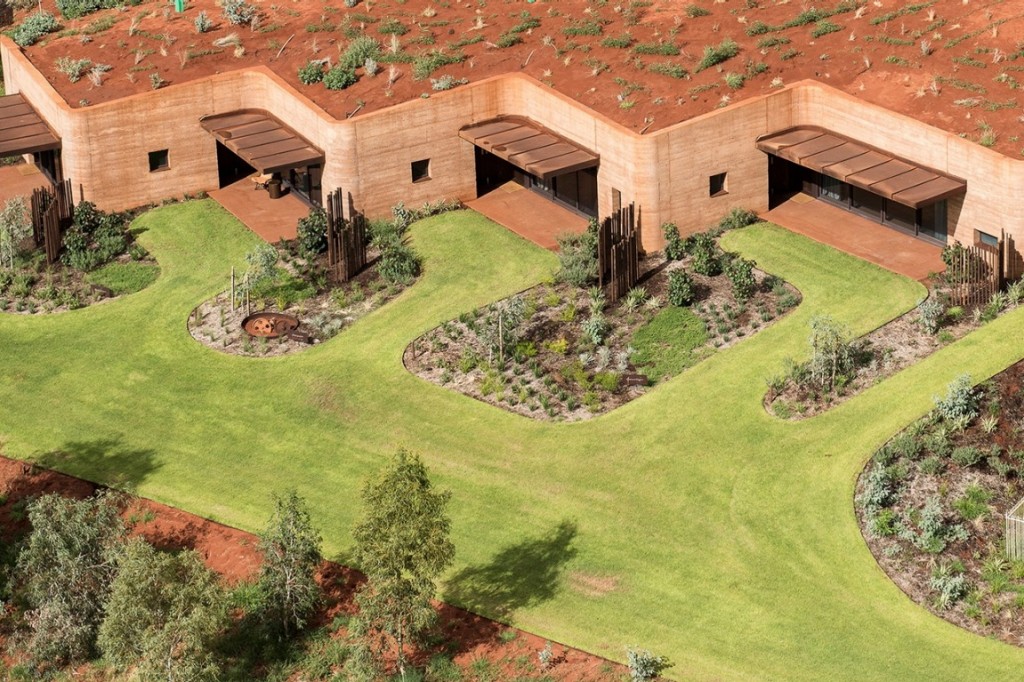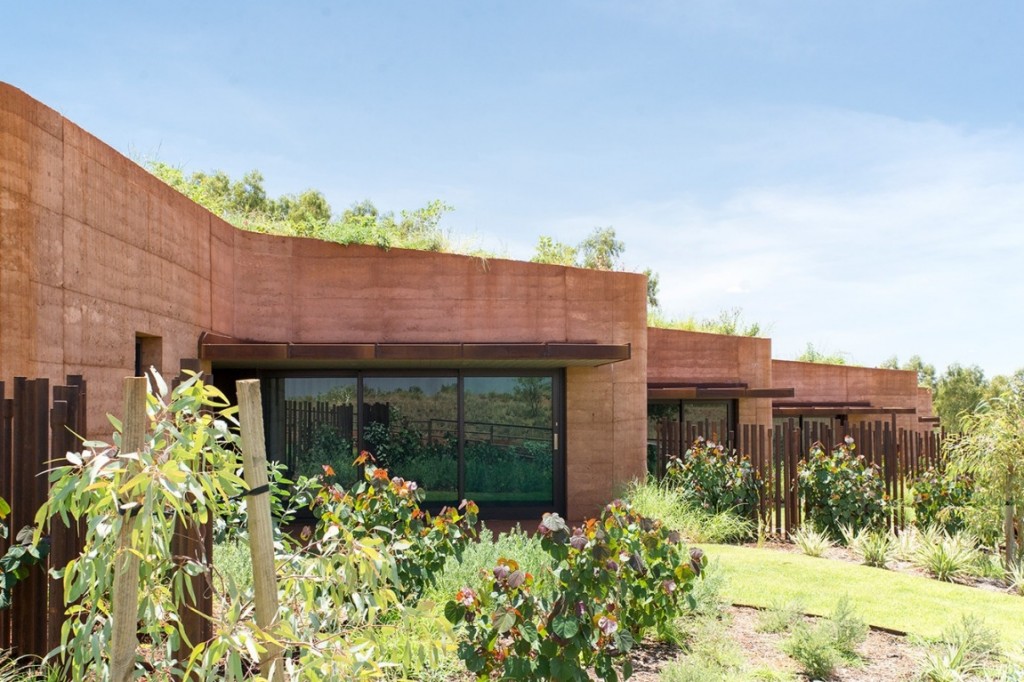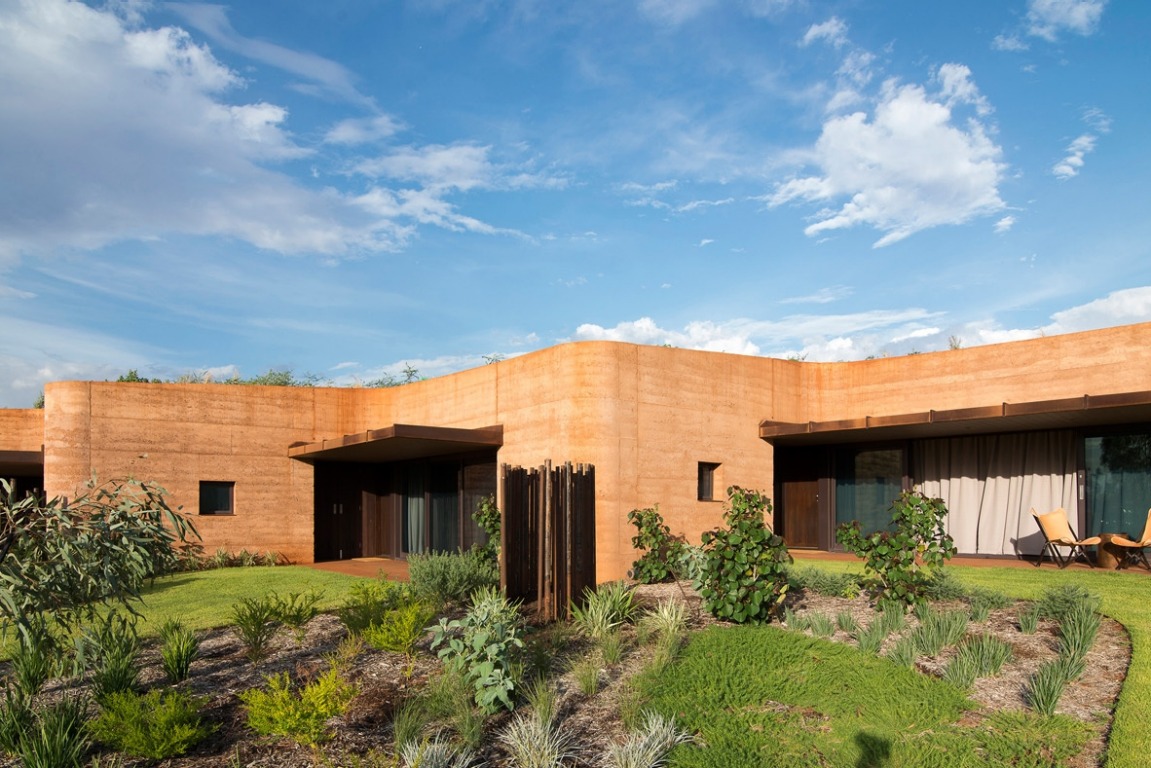A remarkable, rammed earth building in the Pilbara region of Western Australia has been judged by architectural pundits around the world as one of the best new buildings on the planet.
The Great Wall of Western Australia encloses twelve earth covered residences, created to provide short term accommodation for a cattle station during mustering season.

The design represents a new approach to remote North Western Australia architecture, moving away from the sun baked, corrugated metal shelters to naturally cooled architectural earth formations. The walls have the characteristic of being partially porous to absorb and release humidity.
“The evaporation of water out of the walls keeps the walls cool and lowers the overall temperatures.”
Rammed earth derived from a local clay pan, from gravel and water from the nearby river, kept it an inexpensive building, that does not require maintenance, termite control or painting.

A reflective place from where you can see the ghost gums and the river and the very spiritual landscape of this part of the country.
